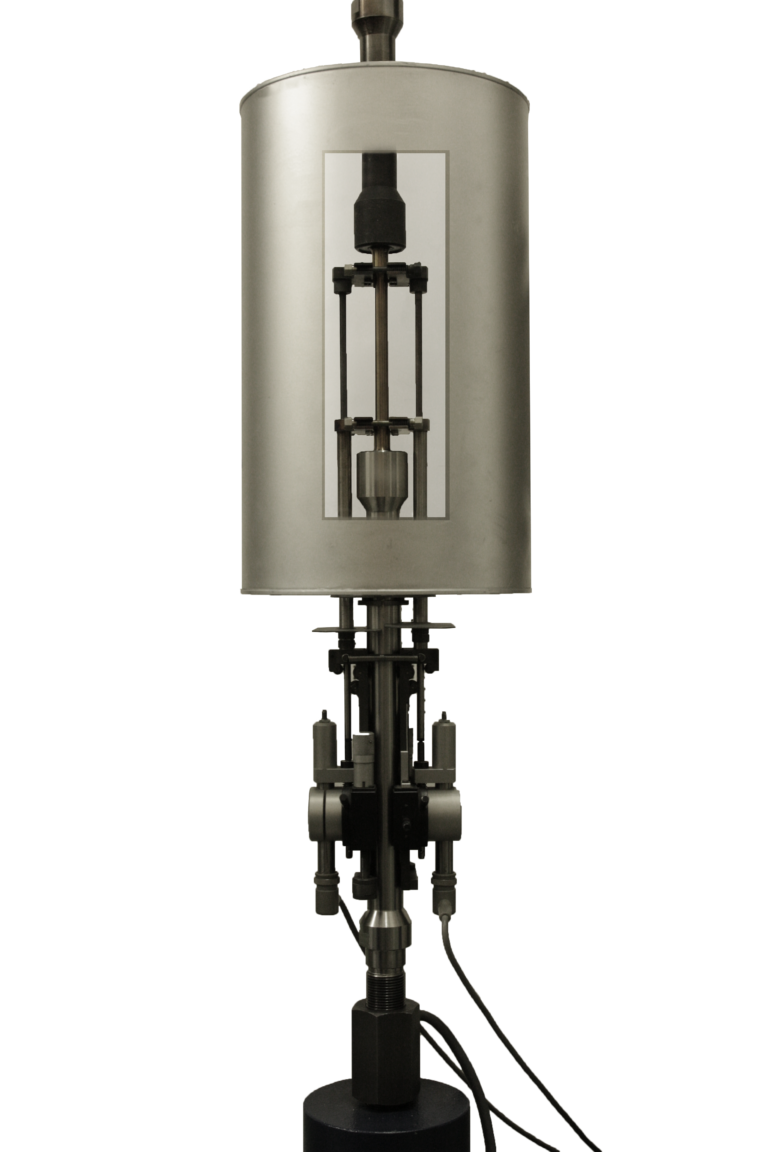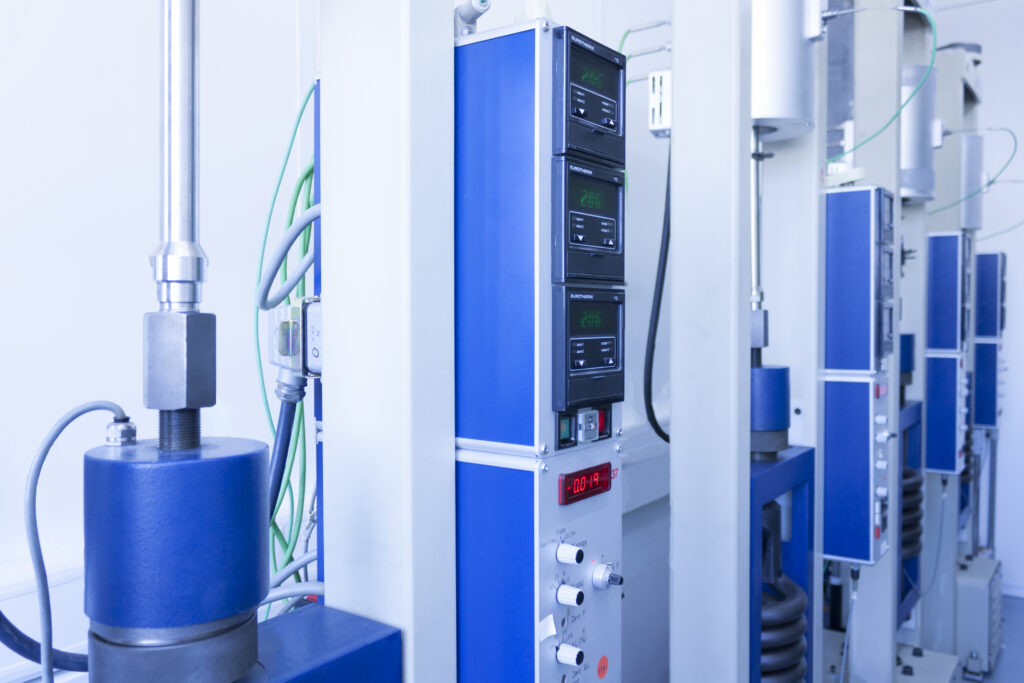Themenübersicht
What is a creep test?
The term creep test is often used, for example, in connection with internal pressure tests of pipelines or pressure vessels. This will not be discussed further here and is not part of the services provided by Suisse TP.
Relevant and within the scope of competence of Suisse TP is the creep test within the material testing also known as creep test or relaxation test and is a destructive material testing method to determine the material behavior under long-lasting constant load usually under elevated temperature. In the creep test, a sample is exposed to an elevated temperature for an extended period of time and loaded with constant tensile force or stress. A distinction is made between short-term and long-term tests from around 10,000 hours.
The aim of a creep test (creep test) is to predict the service life of a material under certain operating conditions. The service life is influenced by the creep behavior of the material.
What is meant by creep?

Creep is the plastic deformation of a material that occurs over a long period of time. Even low loads and elevated temperatures over a long period of time can lead to permanent deformation of materials such as metal, ceramic, plastic, etc. This is of particular importance for materials that are exposed to high temperatures over a long period of time, such as heat engines or components of heat engines, engines or aircraft engines in aviation.
The following external factors have a significant influence on creep:
- extent of the load
- temperature level and
- duration of the load
Which characteristic values are determined in a creep test?
The following characteristic values are determined in the creep test for the assessment of the use of materials in demanding operating conditions, such as in heat engines:
- creep strain
- creep modulus (ratio of stress to strain as a function of the loading time)
- creep strength
- time to specimen break (break time)
- relaxation stress
- time to breakage
- time to breakage
What is creep resistance?
The creep strength is determined on the basis of creep tests and provides information about the lifespan of a material under long-term quasi-static mechanical stress and temperature. The resulting mechanical tension at an elevated temperature usually leads to creep over a certain period of time and ultimately to the failure of the material. An experienced creep strain in components is irreversible. Further exposure of the component or material to stress over a long period of time can lead to cracks and ultimately to breakage.
Suisse TP has a range of creep testing machines that can be used to test both plastics and metals:
Type of machine and equipment
6 creep testing machines
Measuring range
Force range from 0.5 kN to 50 kN
Temperature range from room temperature to 500°C
Typical applications
The long-term behavior of plastics and metals is determined on test specimens under tensile or compressive load (e.g. for foams as core material).
The Suisse TP creep testing machines are located in a separate air-conditioned room. This ensures reliable and stable measurement results even during long-term measurements.
A distinction can be made between creep tests on metals and plastics.
creep testing of metals
There is a whole series of standards for the creep rupture test for metals, which are relevant depending on the test procedure. In principle, the test procedures are distinguished as follows:
a) non-interrupted creep tests with continuous strain measurement;
b) interrupted creep tests with periodic extension measurement;
c) time-to-failure tests, in which usually only the time to failure is measured, with the strain or extension not necessarily being recorded.
Suisse TP generally uses method a) for its tests, as this ensures continuous monitoring of the sample and thus also provides the most valuable results.
Relevant standards:
- ISO 204 Metallic materials – Un
- ASTM E 139 Standard Test Methods for Conducting Creep, Creep-Rupture, and Stress-Rupture Tests of Metallic Materials
- EN 2002-005 Testing procedures for metallic materials – Part 005: Creep and stress rupture test under constant tensile load
- ASTM E
- ISO 15630-3 Steel for the reinforcement and prestressing of concrete – Test methods
Creep tests on plastic
The long-term behavior of plastics is also determined on test rods under tensile stress. The long-term behavior of foams (e.g. for core materials in sandwich composites) can also be determined under compressive stress.
Creep tests on plastics under constant load generate creep curves that provide a good indication of the long-term behavior of plastics. These tests are described in the standards ISO 899-1 and ISO 899-2 as well as in ASTM D2990.
For statistical validation, several test specimens are tested simultaneously, up to six at Suisse TP. When testing plastic specimens, it is important to condition the specimens for comparability of the characteristic values and to maintain the aforementioned temperature consistency throughout the entire test period, which can be over 1000 hours.
Example applications for creep testing
Creep testing for technical safety
Long-term creep behavior of aluminum alloys under temperature load
Long-term behavior of rigid foams at room temperature under pressure load
Find out more about our expertise in the field of technical safety
You can find an overview of further methods in the field of technical safety in our encyclopedia – Technical Safety.

